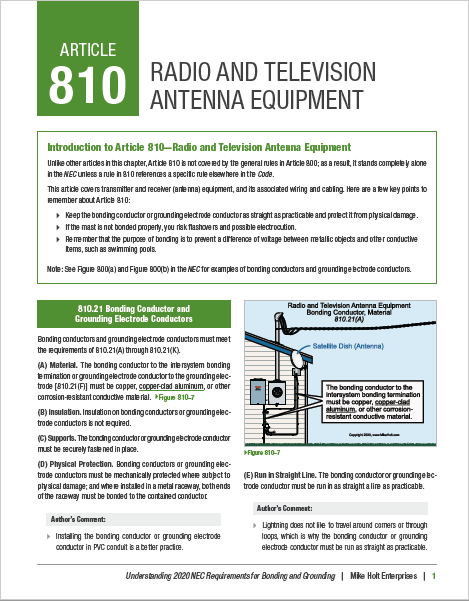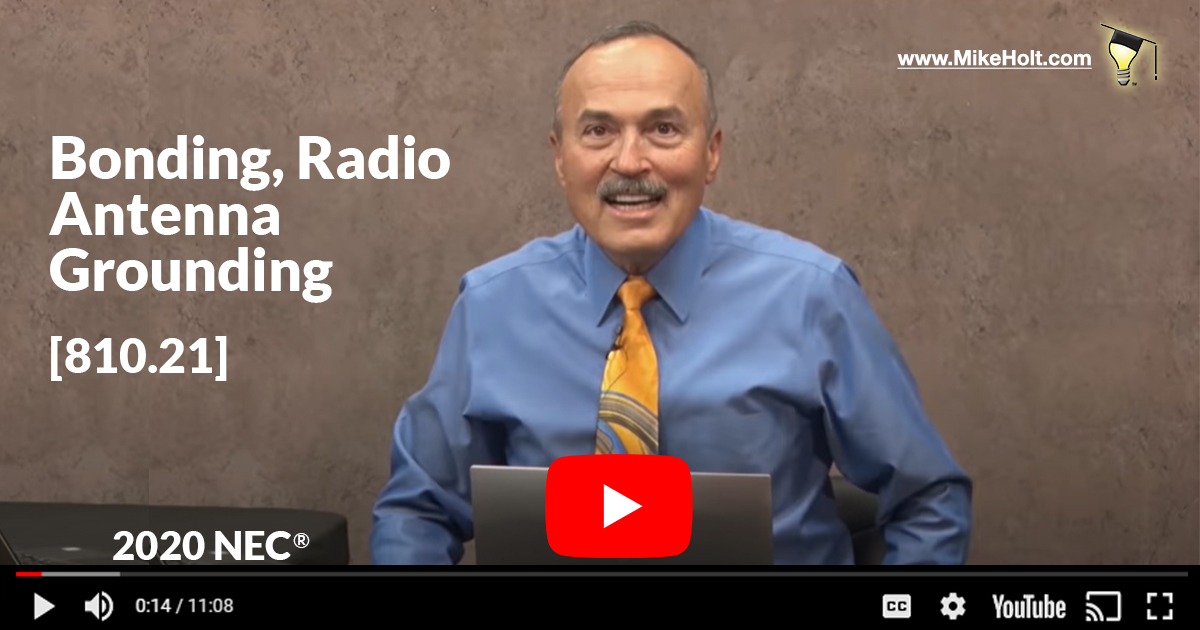|
Keeping up with the requirements of the Code should be the goal of
everyone involved in electrical safety. The following is what I feel is an
important rule in the 2020 NEC®, complete with
graphics and a video. I encourage you to use it as a training resource for
your organization, and share it with your colleagues.

| Bonding, Radio Antenna Grounding [810.21] |
The content below is extracted from
Mike Holt's Understanding NEC Requirements for Bonding and Grounding, based on the 2020 NEC. Be sure to download the PDF to follow as you watch the video.
| |

Click here or on the thumbnail to the left to view or download the PDF of this rule. (3 pages, 1,060KB)
|

|
|
Click on the image above to watch the video
|
NEC Article 810 (Radio and Television Antenna Equipment) is unique in that unlike other articles in Chapter 8, it's not covered by the general rules in the beginning of the chapter (Article 800) and as a result, Article 810 stands alone unless there is a reference to a specific rule elsewhere in the NEC.
Antenna structures are almost always the highest structures on site and as such are more prone to lightning strikes. Outdoor masts and metal structures that support antennas must be bonded in accordance with 810.21. By eliminating differences of potential around the antenna system, you can prevent a dangerous discharge from a nearby lighting strike.
Enjoy this free pdf then watch this video where Mike reviews this topic in more detail.
|
|
|
|
|
We'd
love to hear from you about this series, and the ways you're using it.
Send us your comments and feedback by clicking on "Post a Comment"
below. Look out for the next part in this series a month from now, and
please share with your colleagues. |
This content is extracted from Mike Holt's Understanding NEC Requirements for Bonding and Grounding textbook, based on the 2020 NEC Program.
|
|

